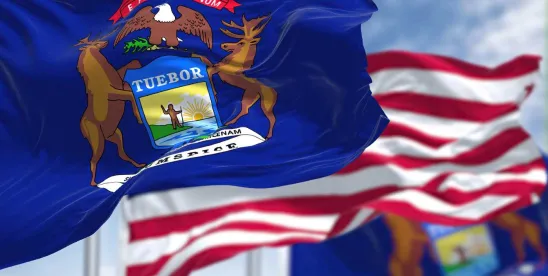HB 5100 and HB 5101, as passed by the Michigan House of Representatives and Senate, and to be signed by Governor Gretchen Whitmer, provide a new income tax credit. For tax years beginning on and after January 1, 2025, Michigan will allow an income tax credit for qualifying research and development expenses incurred in the calendar year.
Authorized Business: The credit is available to an authorized business, which is a business that incurred qualifying research and development expenses during the calendar year. A qualified business includes corporate entities and pass-through entities.
Qualifying research and development expenses: Michigan adopts the federal income tax definition of qualifying research and development expenses but includes only research conducted in Michigan. Research conducted outside Michigan is expressly excluded. Taxpayers should document their research to substantiate the conduct of research in Michigan.
The definition leaves open the question whether every single activity in which a taxpayer must engage to qualify for the credit must be conducted in Michigan, or whether the credit is available for expenses of requisite activities conducted in Michigan even if other requisite activities are conducted outside Michigan. For federal income tax purposes, it appears that some requisite activities may be conducted outside the United States but do not disqualify the research project for the credit. This is so even though the expenses for the non-United States cannot be counted for the credit. The same rule might reasonably apply to a research project conducted in part outside Michigan so that the expenses incurred for the conduct of research conducted in Michigan are creditable.
Credit Amount: The amount of the credit depends on the number of employees of the authorized business.
Authorized businesses with 250 employees or more (“Large Taxpayers”): For qualifying research and development expenses incurred during the calendar year up to the base amount, the credit equals 3% of these expenses. If the qualifying research and development expenses incurred for the calendar year exceed the base amount, the credit equals 10% of the excess. The credit may not exceed $2,000,000 per tax year per taxpayer.
Authorized businesses with less than 250 employees (“Small Taxpayers”): For qualifying research and development expenses incurred during the calendar year up to the base amount, the credit equals 3% of these expenses. If the qualifying research and development expenses incurred for the calendar year exceed the base amount, the credit equals 15% of the excess. The credit may not exceed $250,000 per tax year per taxpayer.
Base Amount: The base amount is the average annual qualifying research and development expenses for the three calendar years immediately preceding the tax year for which the credit is claimed. Adjustments are made if the authorized business does not have qualifying research expenses in some or all the three preceding calendar years.
Note that for federal income tax purposes, no credit can be claimed for qualifying research and development expenses incurred for the year that equal the base amount, but for Michigan income tax purposes, qualifying research and development expenses incurred for the year equal to the base amount do produce a credit, albeit at a lower percentage.
A taxpayer that does not claim the federal research and development credit because its expenses do not exceed its base amount should NOT assume that it cannot claim Michigan research and development credit. The taxpayer still is eligible for the Michigan credit up to 3% of its base amount.
Additional Credit for Collaboration with a Michigan Research University: If a taxpayer conducts qualified research and development for a Michigan research university, then, in addition to the foregoing credits, the taxpayer may claim an additional 5% for the expenses incurred to conduct this collaborative research. An essential requirement is that the taxpayer perform the collaborative research pursuant to a written agreement with the research university and make a copy of the agreement available to the Michigan Department of Treasury if requested to do so. The amount of this collaborative research credit may not exceed $200,000 per tax year per taxpayer. The availability of the collative research credit is problematic if the research university research university “funds” the research, which is a contentious issue for federal income tax research and development credits.
Unitary Business: The limits on the credits allowed to a taxpayer and a pass-through entity presumably are calculated for a unitary group and not separately for each constituent member of the group.
Administrative Requirements to Claim the Credit: The Department of Treasury will prorate the credits for all claimants if the amount of the credits for a single tax year exceeds $100 million. The $100 million limit includes credits allowed to “employers” as provided in HB 5101 (MCL §206.717) that are pass-through entities.
Tentative Claim Requirement: To be eligible for the credit, a taxpayer must submit a tentative credit claim on a form prescribed by the Department of Treasury by April 1, 2026, for the 2025 calendar year. For calendar years after 2025, a taxpayer must file the tentative credit claim by March 15 after the year for which the credit is claimed.
The Department of Treasury will use the total of these tentative credit claims to prorate and decrease the credits of claimants if the total of all the tentative claims exceeds the $100 million limitation. The form will indicate if the taxpayer is a Small or Large Taxpayer, the amount of qualifying research and development expenses, and whether collaborative university research and development expenses are being claimed.
Proration for Small Taxpayers: No prorated reduction is required for credits claimed by Small Taxpayers if the total credits claimed by these taxpayers do not exceed $25 million. The credits claimed by Small Taxpayers must be prorated and decreased if the total of the tentative claims filed by these taxpayers exceed $25 million.
Proration for Large Taxpayers: If credits claimed by Small Taxpayer must be prorated and decreased, then the total credits claimed by Large Taxpayers must be prorated and decreased so that the total amount of the credits claimed by Large Taxpayers does not exceed $75 million.
Overall Proration: If the total tentative credit claims of Small Taxpayers exceed 25% of the total of all claims, then separate prorations for Small Taxpayers and Large Taxpayers do not apply, and all taxpayers’ claims are prorated together so that the total of the claimed credits does not exceed $100 million.
Nontransferable But Refundable: A taxpayer may not assign or transfer the research and development credits, but if these credits exceed the taxpayer’s tax liability for the year after taking into account all other allowable nonrefundable credits, then the excess of the research and development credits over the tax liability for year is refunded to the taxpayer.





 />i
/>i

